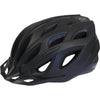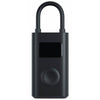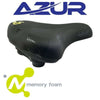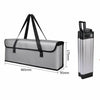E-bike/E-scooter Maintenance
What does it take to maintain an electric bike? It’s not that much work. Here are some steps to take to keep your ride in peak condition.
1. General Maintenance
When it comes to getting your e-bike serviced, one thing you may wonder is how often you should get this done.
Well, this depends on how often you use the bike and also how far you travel on it.
As a rule of thumb, you should aim to get your e-bike serviced every 700- 1,000 kilometres or at least every six months. Pedl's warranty requires your bike to be serviced once in the first 6 months
Of course, issues can arise in between services, so you also need to ensure you carry out some basic checks yourself on a regular basis.
2. Check the Tire Pressure
Sufficiently inflated tires help you maintain stability and traction when riding. They also keep you from bumping around too much and make for a smoother ride. On top of that, well-inflated tires help avoid excess friction and allow for more efficient pedaling — meaning it’s easier to go faster.
Check your tire pressure regularly with a standard bike pump. The tires should say what the recommended pressure range is on the side.
Learn more about the different types of e-bike tires.
You should also monitor how often you’re riding your bike to properly gauge when it’s time for replacements. Typically, you’re going to want to make a note when you reach between 2500km's - 3000km's. This varies based on how often and where you ride your electric bike.
We’ll talk more about tire replacement further below!
3. Inspect Brake Pads and Wheels
A bike’s brake pads wear down over time due to repeated friction. As a result, stopping becomes slower and slower. To ensure you can come to clean stops — and avoid hitting obstacles — do regular brake pad inspections. If you have a higher powered bike like the Mamba you will need to brake more often at faster speeds with more pressure so brake pads will wear out faster than a less powerful bike. We advise 600-800km for more powerful bikes you will need to replace the brake pads and 1200plus on less powerful bikes.
There are a few bike brake systems: hydraulic, mechanical, and rim brakes.
For rim brakes, it’s important to check the bike’s rims and replace them if worn or damaged — for example, due to dents from flying gravel on the road.
Check your brakes after every couple of rides and give the rims a quick glance after every ride. You never know what tires can kick up while you’re riding, and a quick inspection after every ride will ensure you can keep your bike in top shape.
4. Grease All Bearings
The bike’s electric motor and drivetrain help keep it running smoothly. If you hear noise from these components, you may need to grease the bearings to reduce friction. This can improve performance, creating a smoother ride.
You’ll definitely hear the noise when it happens. If you don’t have any resources available to you, you can always bring your electric bike to your nearest bike shop. If you have to do this, we would recommend getting your whole bike checked. You’re already there, right?
Fortunately for those who enjoy hands-on work, you can still do it yourself. You can apply grease with a dry, soft cloth. Make sure to wipe off excess grease afterward. Otherwise, dirt and other debris may stick to the substance and get into the bicycle’s e-drive system components, causing potential technical difficulties.
5. Monitor Connection Points
An e-bike relies on multiple electrical connectors, such as wiring harnesses and junction boxes. The motor may not get the necessary power if these electrical components get wet. This can decrease motor function or — in the worst-case scenario — result in shutdowns.
Check these connection points regularly for signs of rust, which can result from water damage. This is especially important if you ride in wet or muddy terrain, where splashback can moisten the bike frame.
6. Clean the Drivetrain
The drivetrain consists of chains, cranks, sprockets, and derailleurs — the parts of the bike that help it change gears. A clean drivetrain makes for an efficient ride, with seamless pedaling and gear switching. Regular cleaning removes debris, which can cause wear and tear on these parts over time.
You can use a clean, lint-free cloth and mild detergent to clean the various components of the drivetrain. Make sure to dry the parts after to minimize the risk of corrosion.
7. Check or Test the Motor Temperature
This should only be done by a professional but at least once a year on a major service.
8. Diagnose the Electrical System
This should only be done by a professional but at least once a year on a major service.
9. Battery Maintenance
Please refer to our link for a full comprehensive battery care guide
10. Inspect and Lube the Bike Chain
Bike chains accumulate dirt with every ride. Over time, they become more worn and brittle if not maintained, resulting in potential breakage. A broken bike chain can leave you stranded on the side of the road. A well-maintained chain also helps ensure a smooth ride.
Inspect your bike chain for signs of corrosion or other damage, and clean it with a lint-free cloth. You should then apply lubricant on all parts of the chain, helping reduce friction and the risk of rust.
Make sure you have the correct lubrication before you get going. Some e-bikes might require a different type of lubrication than standard, non-electronic bikes.
11. Test the Suspension and Steering
The bike’s suspension helps absorb shock and maintain an even, pleasant riding experience. It also makes it easier to steer the bike, which is important when dealing with changes to terrain or speed.
You can usually tell if something is off with your bike’s suspension because you’ll experience a bumpier ride. A professional can test the bike’s suspension using a shock dynamometer.
If you experience a bumpier ride or if something feels off, it’s essential to get this checked immediately to avoid injuries or damage to your
12. Fix Any Loose Parts
Even with regular inspection and maintenance, your e-bike may experience small screws or other components coming loose over time, especially after riding on bumpy terrain.
Check key bike components, such as brake levers and knobs, for signs of looseness at least once a week. Parts made from plastic are prone to coming loose. Additionally, look for signs of wear and tear, including imperfections like scrapes and dents, which could indicate more serious damage.
How Often Should I Clean or Maintain My Bike?
Now that you know what goes into e-bike maintenance, you’re probably wondering: How often do I have to do all of that?
For safety reasons, tick these three items off your to-do list before every ride:
Check the tire pressure. You never know if a loose valve cap or unnoticed puncture damage from a previous day’s ride might result in rapid air loss. It’s always worth checking the tire pressure before every ride.
Fix any loose parts. Never ride with loose parts! Give your bike a quick once-over before hopping on to ensure brake levers, knobs, and electrical components are securely attached.
Check your battery. You don’t want to get halfway through your journey only to discover that your e-bike battery is out of juice. Check the e-bike battery’s power before hopping on your ride.
Additionally, after every ride, clean your bike. Dust, dirt, pollen, and other grime can contaminate the bike, jamming up the gears, drivetrain, and other components. Before washing your bike, remove the battery to protect it from water.
You should always wipe your bike down, even if you went on a short ride through the neighborhood or ran a quick errand. A soft cloth will do the trick, as you should wipe down the frame and other components to ensure your EBike keeps its shine.
How To Wash an Ebike
To wash your bike, use water from a bucket or low-pressure hose and cloth. Never use a high-pressure power washer, and never use water anywhere near the battery , motor and electrics. You can use a large sponge or brush with a bike-friendly cleaning product to help cut through stubborn grime.
Once you rinse the bike, wipe it down with a clean cloth. As a rule, avoid the disc brakes when cleaning. You don’t want to contaminate them with cleaning products or oils from other parts of the bike.
Beyond the basics, take your bike in for a professional cleaning and tune-up at least once a year, possibly more if you use your e-bike heavily. Our guide is at lease once every 700-1000km's
Of course, if issues arise and more serious repairs are needed, take your bike to a local bike shop for help immediately. Never ride your e-bike if you have doubts about its integrity or safe










